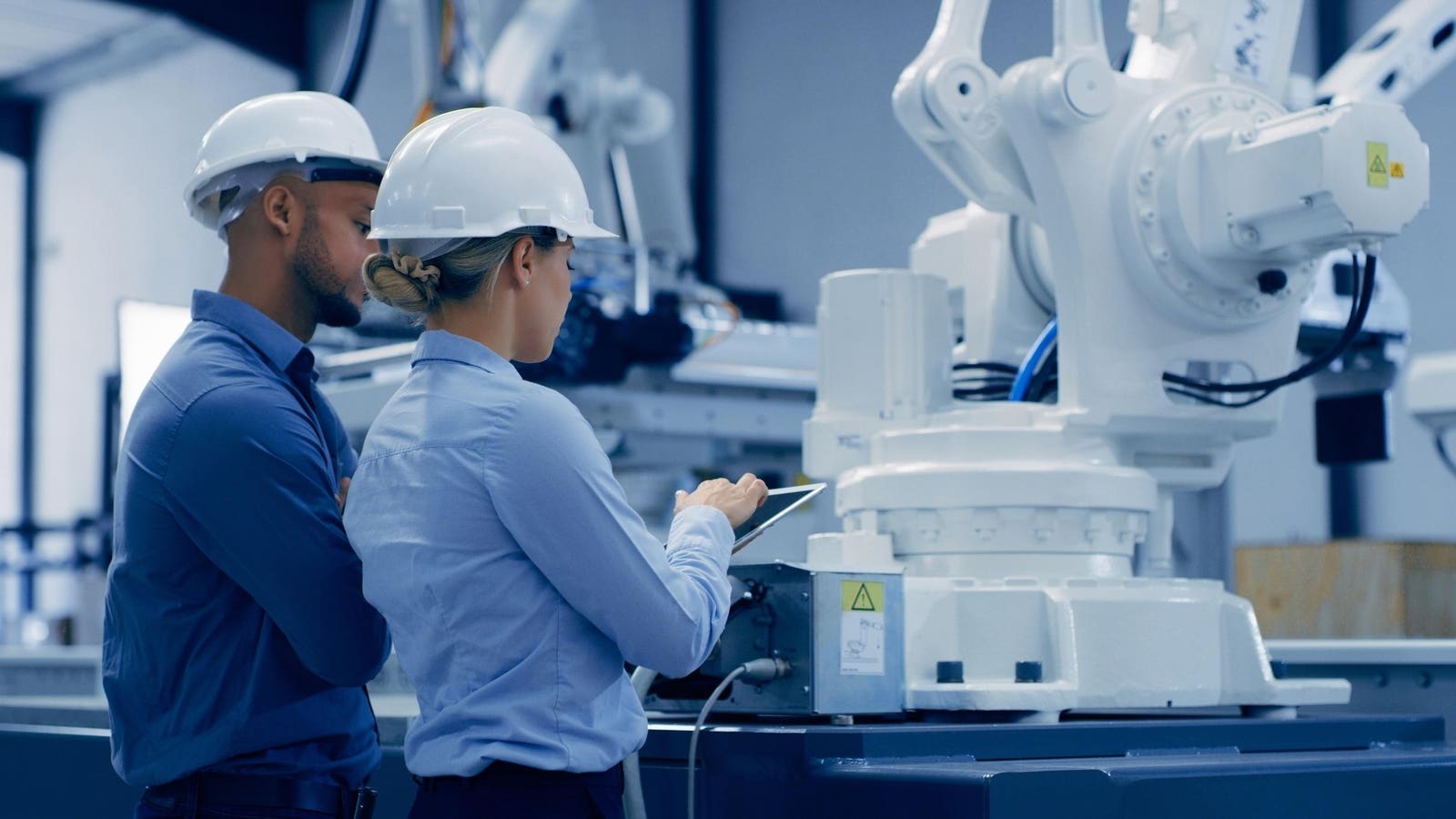Companies in asset-intensive industries like manufacturing, energy and transportation often run on standardized, repetitive processes. However, these “simple” processes are often part of complex, machine-dominated systems. It’s a working environment that’s ripe for automation and a turn toward autonomous operations, and many companies are exploring the possibilities.
From enhanced efficiency to improved operational uptime to data-driven insights, there are multiple benefits for businesses in asset-intensive industries in adopting autonomous operations. In turn, customers may experience more reliable service and lower costs. Below, members of Forbes Technology Council explore some of the trends and emerging developments and what they could mean for businesses, workers and the people they serve.
1. Seamless Connectivity Through 5G And Edge Computing
The confluence of private 5G, single SIM, edge computing and Starlink technologies will redefine how asset-intensive industries operate. Allowing these industries to ubiquitously support all assets—wherever they currently reside on Earth—with the same operations, interfaces and real-time access to data for a uniform AI and security posture will be a paradigm shift. – Ed Fox, MetTel
2. AI-Driven Flexibility In Manufacturing
Autonomous operations will enable asset-intensive industries to bridge the traditional gap between high-mix/low-volume and low-mix/high-volume production. Through AI agents, advanced sensors and enhanced computing power, manufacturing lines will achieve unprecedented flexibility, allowing rapid customization without sacrificing efficiency—transforming how industries balance variety and volume. – Lee-Lean Shu, GSI Technology
Forbes Technology Council is an invitation-only community for world-class CIOs, CTOs and technology executives. Do I qualify?
3. AI-Native CRMs For Predictive Customer Engagement
AI-native CRM models tailored for asset-intensive industries will redefine customer engagement, service delivery and operational efficiency. Unlike reactive models, AI will enable actionable customer support by predicting equipment failures, scheduling maintenance before downtime occurs and even suggesting operational optimizations. This shift will improve customer satisfaction and revenue growth. – Katherine Kostereva, Creatio
4. Autonomous AI For Physical Asset Optimization
The next frontier lies in applying AI to physical assets. Advancements in robotics, sensors and intelligent machines will enable more efficient, scalable and autonomous operations and make real-time decisions using data from connected sensors. This will minimize human intervention in hazardous environments, optimize production cycles and reduce both operational costs and safety risks. – Harrison Lung, e&
5. AI-Powered IoT Interoperability
The Internet of Things interoperability problem will be solved by AI and cloud-native technologies. IoT interoperability is one of the biggest hurdles to bringing down the cost of autonomous operations. The lack of interoperability leads to extremely high IoT integration costs each year. If we could spend that money on the application layer instead of the infrastructure layer, we could unleash $4 trillion in productivity. – Yongli Chen, Edgenesis
6. Agentic AI As The Future Of Workforce Automation
As organizations increasingly adopt agentic AI, advances in automation across departments will become an industry benchmark for increased productivity. With 37% of IT leaders remaining unfamiliar with agentic AI’s capabilities, we can expect innovative cultural shifts across IT enterprises globally. – Ali Siddiqui, BMC Software
7. Predictive Intelligence In Autonomous Operations
The predictive revolution of autonomous operations has come to asset-intensive industries. This includes everything from predictive maintenance that lets people repair machines before they break to predictive procurement that helps organizations procure goods and services well before they become urgently needed. – Edmund Zagorin, Arkestro
8. Physics-Aware AI For Industrial Applications
Physics-aware foundation models can close the gap where data-driven models fall short. As well as providing guardrails for safe and reliable processes, physics enables data-efficient models that extrapolate scenarios without training data. Rather than large, generalized models, small, purpose-built models—those orchestrated by agentic AI in an industrial data fabric—are the future. – Heiko Claussen, Aspen Technology, Inc.
9. GenAI For Scalable Visual Media Automation
Mass adoption of AI and generative AI to automate the creation, management, transformation and optimization of visual media at scale—including immersive formats like 3D and augmented reality—will slash production time, cut costs and enable real-time, hyperpersonalized experiences. It will redefine creative possibilities and unlock entirely new ways for brands and consumers to connect and interact online. – Tal Lev-Ami, Cloudinary
10. Digital Twins For Asset Tracking And Optimization
Asset-intensive industries, like smart cities and vehicle fleets, need to continuously track thousands of assets, analyze telemetry for issues and respond quickly and effectively when the need arises. Because they can introspect on each data source, digital twins with integrated machine learning and enhanced with generative AI can provide the autonomous analysis that these operations demand. – William Bain, ScaleOut Software, Inc.
11. AI-Driven Process Intelligence For Sustainability
AI-driven process intelligence will redefine asset-intensive industries by enabling real-time anomaly detection, predictive maintenance and self-optimizing workflows. This will help reduce costs, increase uptime and drive long-term sustainability. – Kerry Brown, Celonis
12. Hyperautonomous Operations And Self-Optimizing AI
One transformative trend is the shift from autonomous to hyperautonomous operations, where AI-driven systems evolve beyond automation to self-optimizing, self-adapting decision-making. Inspired by artificial general intelligence (AGI) concepts, these systems will predict failures, reconfigure workflows and autonomously balance efficiency with sustainability, unlocking new levels of resilience in asset-intensive industries. – Jabin Geevarghese George, Tata Consultancy Services
13. AI-Powered Logistics Automation In Resource Industries
Materials movements across truck scales that require complex interactions carried out by drivers via user interfaces will vanish. Mobile devices, such as the driver’s phone, will already understand deliveries and shipments, while AI, via sensors and cameras, will track all aspects of the transaction in a near touchless workflow. The costly logistics of resource-intensive industries will be fully automated. – Evan J. Schwartz, AMCS Group
14. Interoperability In Industrial Automation
There will be increased movement toward greater interoperability between automation systems. Today, we still see automation systems acting in silos; they cannot truly orchestrate the processes they are tackling. For example, my picking robot might not be aware of what my pallet-building robot is doing, so rather than harmonizing, I optimize pockets but simply move the constraints elsewhere. Smarter software is tackling this issue. – Guy Courtin, Tecsys Inc.
15. Maximizing ROI Through Data-Driven Operations
Receiving a return on the data that asset-intensive industries already produce will redefine how they operate. Buying new machines and equipment is an expensive way to expand output. Manufacturers and other asset-heavy industries that invest in software solutions will amplify what they already have by combining data with visibility, problem-solving and reporting to maximize their ROI. – Simon Dae Oong Kim, Glassdome Inc.
16. Agentic AI For Intelligent Workflow Automation
Agentic AI will transform asset-intensive industries by embedding intelligent agents into workflows. With high-quality data, agents can interpret natural language prompts to diagnose issues, offer insights and initiate actions autonomously, streamlining operations. By enabling fast, humanized interactions without coding, agentic AI also enhances adaptability and long-term reliability. – Tiago Azevedo, OutSystems
17. Autonomous Energy Optimization In CRE
As one of the most asset-intensive industries, commercial real estate faces ongoing budget pressures from rising energy costs and the grid strain driven by AI development. Maximizing efficiency and reducing expenses is essential. Autonomous tech, like occupancy-based ventilation controls, offers an immediate solution, cutting energy use and lowering OpEx. – Jennifer Nuckles, R-Zero
18. GenAI-Driven RPA For IT-OT Integration
Think of GenAI-driven robotic process automation that bridges IT and OT—this advanced automation would actually unlock the value of asset management, utilization, monetization and many other functions. Today, IT and OT are two separate islands, and very few enterprises have built the system of systems that unifies them. – Prashanth Bhushan, Cognizant Technology Solutions
19. AI-Powered Collaboration Across Autonomous Systems
Industries will move beyond isolated automation to AI-powered collaboration, where autonomous systems exchange data using decentralized AI and federated learning. Companies can leverage interoperable AI frameworks, blockchain smart contracts and shared intelligence platforms. This shift won’t just cut inefficiencies—it’ll sync production, optimize logistics and make supply chains more resilient. – Santhosh Vijayabaskar








